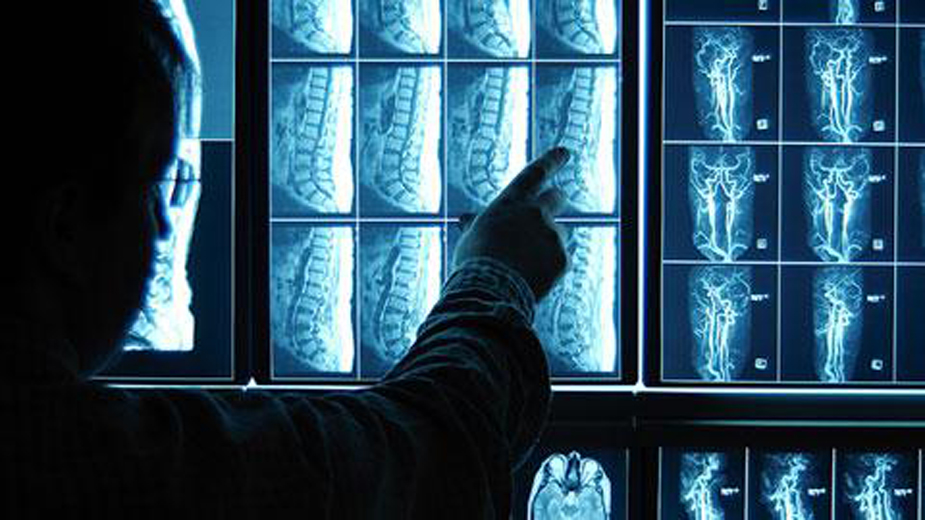Direct Digital Radiography Advances Medical Diagnosis
YOUNGSTOWN, Ohio – Updating their technological capabilities remains a focus of medical imaging services that serve physicians, hospitals and clinics.
These providers of imaging services operate both independently and within hospitals.
The biggest change in the industry is the advent of direct digital radiography, or DDR, says Ben Karmazin, director of operations for Cavalier Mobile X-Ray, Boardman.
Cavalier, which opened 27 years ago, operates throughout Ohio and has 12 X-ray and four ultrasound units, he says. It was among the first companies in the nation to adopt DDR and offer it in the portable market, he says. And it remains the sole imaging company in Ohio that uses only DDR .
“It creates a much more efficient process and it’s much faster to get the results back,” Karmazin says. Rather than having to wait for film to be processed, the scan can be viewed immediately as an image on a computer screen, so the medical professional sees inside the patient in real time.
In addition to speed, the technology provides greater accuracy, is of a higher quality and exposes the patient to a lower dose of radiation, he says.
Cavalier primarily serves skilled nursing centers, assisted living homes and home health patients, Karmazin says. Business is “very seasonal,” he relates. This time of year, most is related to falls that result in broken bones while business in colder months is doing chest X-rays and looking for pneumonia.
Among the innovations in imaging technology at Salem Regional Medical Center, Salem, are new high-definition ultrasound units, reports Dr. Peter Apicella, director of its medical imaging department.
Apicella, at Salem Regional 23 years, took over the department in the 1990s. Back in the 1960s, his father was the department’s second radiologist, he relates.
Three new ultrasound units were installed at the main campus and at a satellite at the Town Center at Firestone Farms in Columbiana.
The higher-definition units “can see smaller things, catch cancers earlier and see more abnormalities that we can’t currently see,” Apicella says. The technology allows earlier detection of liver ailments, such as inflammation or cirrhosis, and kidney stones.
Salem Regional also has the fastest CT scanner made as well as the high-resolution 3T MRI. The CT scanner has two X-ray tubes instead of one. “Because of that, it’s twice as fast,” Apicella says. The unit can do virtual colonoscopies to catch colon cancers early, an examination that requires no sedation and takes only 10 minutes.
The 3T MRI permits brain, spine and joint imaging at a high resolution, he adds. The hospital just installed the latest version of 3-D mammography, which offers the highest resolution method of looking for breast cancers.
DMXI, or Diagnostic Medical X-Ray & Imaging, in Boardman recently installed a 64-slice CT scanner, jumping from a two-slice, says practice manager Cheryl Cox. DMXI offers digital mammography as well, she says.
Business has been good because of the pricing model DMXI employs, one that’s lower than those of many hospitals, Cox says. One procedure at a hospital would leave a patient with a $1,700 bill after insurance, where the same scan at DMXI would cost him $320 out of pocket, she says.
Why is the pricing different? “We’d like to know that ourselves,” she responds. Insurance companies dictate prices and reimbursement, she says. The difference “makes it nice for patients because they’re not paying a huge amount out-of-pocket, but we have the same expenses a hospital has,” she says.
Akron Children’s Hospital Mahoning Valley has nearly all of the imaging modalities its main campus offers, pediatric radiologist Dr. David McDonald says. “As a radiology department, we’re starting to be able to do as much as possible that the main campus is able to do,” he states.
At the Mahoning Valley Campus in Boardman, recent purchases have included what McDonald describes as important software for the MRI scanner that addresses the hospital’s patients. Children, he notes, can get frightened in the setting of a radiology department.
“An MRI examination is composed of many different sequences,” McDonald says, which normally are very loud. The new software allows them to be put in “silent mode,” as he puts it. “With certain exams we can do the entire exam or almost the entire exam in a very quiet way.”
Other new software allows physicians to examine arteries and veins so they can see conditions such as vascular abnormalities.
In addition to the software advances, the campus upgraded its X-ray room to a more digital state.
While he is “very proud” of the campus’ technological capabilities, McDonald says he is proudest of the radiology department staff’s dedication to their patients.
Since joining the staff in January 2013, he has been impressed that “everybody here is just 100% here for the kids and trying to make sure that we do high-quality pediatric-specific imaging, and do it in a way with as little stress as possible for these kids,” he says. “Because it can be a difficult thing for some of these kids to have to go through.
“A big thing for us is that our folks are specifically pediatrically trained to do some of these procedures the least stressful way for these kids and the parents,” he says. The advanced technology means parents and doctors will “most likely get the information [they] need” and get it more quickly.
Copyright 2024 The Business Journal, Youngstown, Ohio.



